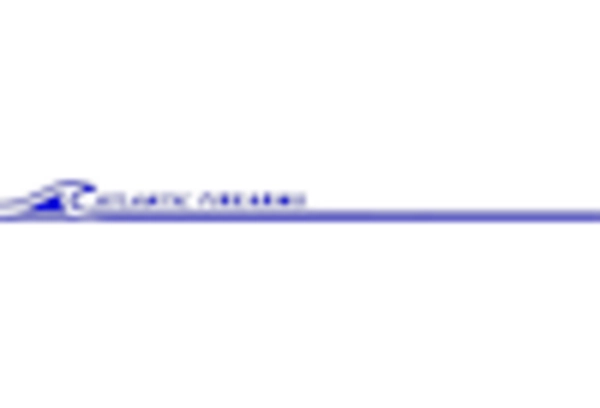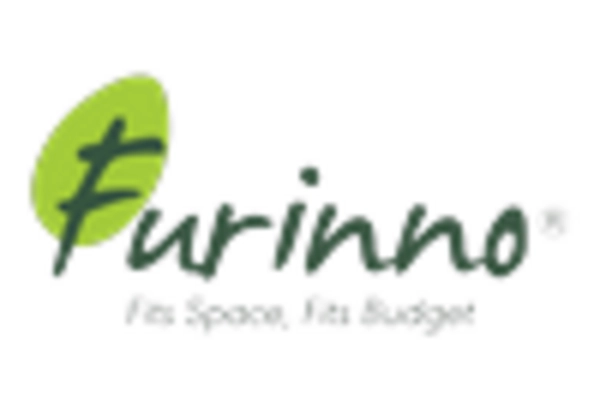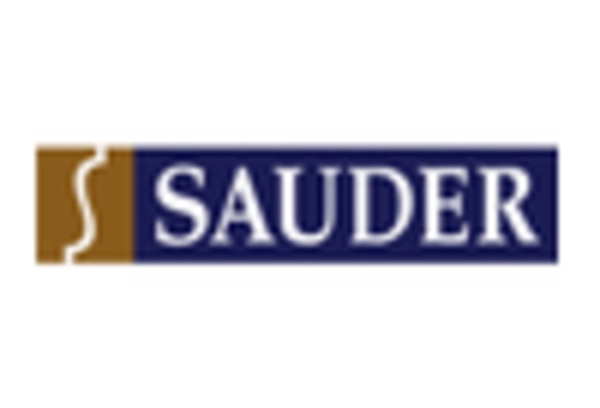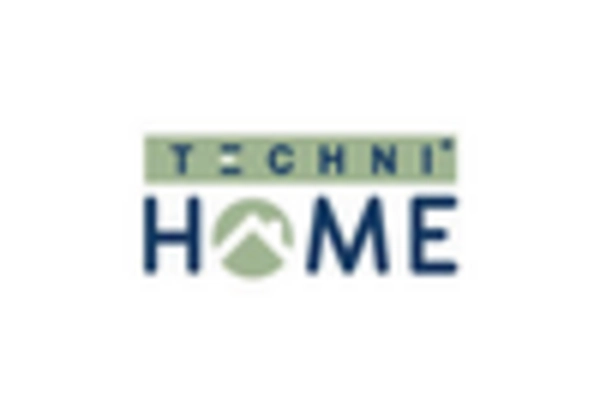The laptop tables market exhibits a dynamic competitive landscape characterized by a blend of innovation, strategic partnerships, and a focus on sustainability. Key players such as IKEA (SE), Sauder Woodworking Co (US), and Zinus (US) are actively shaping the market through their distinct operational strategies. IKEA (SE) emphasizes a commitment to sustainability, integrating eco-friendly materials into its product lines, which resonates with the growing consumer demand for environmentally responsible products. Sauder Woodworking Co (US) focuses on regional expansion and customization, catering to diverse consumer preferences across various demographics. Zinus (US), on the other hand, leverages digital transformation to enhance its online presence and streamline its supply chain, thereby improving customer engagement and operational efficiency. Collectively, these strategies contribute to a moderately fragmented market where innovation and consumer-centric approaches are pivotal.
In terms of business tactics, companies are increasingly localizing manufacturing to reduce lead times and enhance supply chain resilience. This trend is particularly evident as firms adapt to fluctuating consumer demands and strive for operational efficiency. The competitive structure of the market remains moderately fragmented, with several players vying for market share. The collective influence of these key players fosters a competitive environment where differentiation is achieved through product quality, design, and customer service.
In October 2025, IKEA (SE) announced the launch of a new line of laptop tables designed specifically for small spaces, reflecting a growing trend towards multifunctional furniture. This strategic move not only addresses the needs of urban consumers but also reinforces IKEA's commitment to sustainability by utilizing recycled materials. The introduction of this product line is likely to enhance IKEA's market position by appealing to a demographic increasingly focused on space efficiency and environmental impact.
In September 2025, Zinus (US) unveiled a partnership with a leading tech company to integrate smart technology into its laptop tables. This collaboration aims to create tables that offer built-in charging capabilities and connectivity features, aligning with the increasing consumer preference for tech-savvy furniture solutions. The strategic importance of this partnership lies in Zinus's ability to differentiate its offerings in a competitive market, potentially attracting a tech-oriented customer base.
In August 2025, Sauder Woodworking Co (US) expanded its distribution network by partnering with several e-commerce platforms, enhancing its online visibility and accessibility. This strategic action is significant as it allows Sauder to reach a broader audience, particularly among younger consumers who prefer online shopping. By optimizing its distribution channels, Sauder positions itself to capitalize on the growing trend of e-commerce in the furniture sector.
As of November 2025, the competitive trends in the laptop tables market are increasingly defined by digitalization, sustainability, and the integration of smart technologies. Strategic alliances are becoming more prevalent, enabling companies to leverage complementary strengths and enhance their market offerings. Looking ahead, competitive differentiation is expected to evolve, shifting from price-based competition to a focus on innovation, technology integration, and supply chain reliability. This transition underscores the importance of adapting to consumer preferences and market dynamics in a rapidly changing landscape.

















Leave a Comment